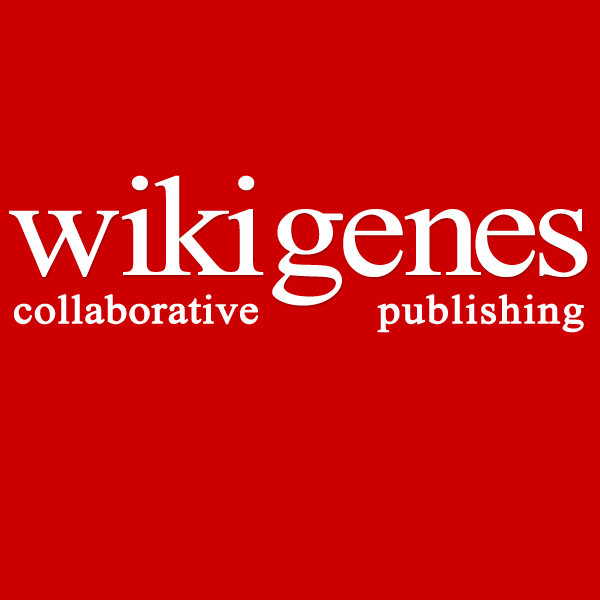Gene Review:
Snai2 - snail family zinc finger 2
Mus musculus
Synonyms:
Neural crest transcription factor Slug, Protein snail homolog 2, Slug, Slugh, Snail2, ...
- cDNA microarrays detect activation of a myogenic transcription program by the PAX3-FKHR fusion oncogene. Khan, J., Bittner, M.L., Saal, L.H., Teichmann, U., Azorsa, D.O., Gooden, G.C., Pavan, W.J., Trent, J.M., Meltzer, P.S. Proc. Natl. Acad. Sci. U.S.A. (1999)
- Transcription repressor slug promotes carcinoma invasion and predicts outcome of patients with lung adenocarcinoma. Shih, J.Y., Tsai, M.F., Chang, T.H., Chang, Y.L., Yuan, A., Yu, C.J., Lin, S.B., Liou, G.Y., Lee, M.L., Chen, J.J., Hong, T.M., Yang, S.C., Su, J.L., Lee, Y.C., Yang, P.C. Clin. Cancer Res. (2005)
- Snail and Slug are major determinants of ovarian cancer invasiveness at the transcription level. Kurrey, N.K., K, A., Bapat, S.A. Gynecol. Oncol. (2005)
- Slug antagonizes p53-mediated apoptosis of hematopoietic progenitors by repressing puma. Wu, W.S., Heinrichs, S., Xu, D., Garrison, S.P., Zambetti, G.P., Adams, J.M., Look, A.T. Cell (2005)
- The melanocyte differentiation program predisposes to metastasis after neoplastic transformation. Gupta, P.B., Kuperwasser, C., Brunet, J.P., Ramaswamy, S., Kuo, W.L., Gray, J.W., Naber, S.P., Weinberg, R.A. Nat. Genet. (2005)
- The zinc-finger protein slug causes desmosome dissociation, an initial and necessary step for growth factor-induced epithelial-mesenchymal transition. Savagner, P., Yamada, K.M., Thiery, J.P. J. Cell Biol. (1997)
- Mouse cDNA microarray analysis uncovers Slug targets in mouse embryonic fibroblasts. Bermejo-Rodríguez, C., Pérez-Caro, M., Pérez-Mancera, P.A., Sánchez-Beato, M., Piris, M.A., Sánchez-García, I. Genomics (2006)
- SLUG (SNAI2) deletions in patients with Waardenburg disease. Sánchez-Martín, M., Rodríguez-García, A., Pérez-Losada, J., Sagrera, A., Read, A.P., Sánchez-García, I. Hum. Mol. Genet. (2002)
- Mouse Snail family transcription repressors regulate chondrocyte, extracellular matrix, type II collagen, and aggrecan. Seki, K., Fujimori, T., Savagner, P., Hata, A., Aikawa, T., Ogata, N., Nabeshima, Y., Kaechoong, L. J. Biol. Chem. (2003)
- SLUG in cancer development. Pérez-Mancera, P.A., González-Herrero, I., Pérez-Caro, M., Gutiérrez-Cianca, N., Flores, T., Gutiérrez-Adán, A., Pintado, B., Sánchez-Martín, M., Sánchez-García, I. Oncogene (2005)
- The Slug gene is not essential for mesoderm or neural crest development in mice. Jiang, R., Lan, Y., Norton, C.R., Sundberg, J.P., Gridley, T. Dev. Biol. (1998)
- Snail1 gene function during early embryo patterning in mice. Murray, S.A., Gridley, T. Cell Cycle (2006)
- Zinc-finger transcription factor Slug contributes to the function of the stem cell factor c-kit signaling pathway. Pérez-Losada, J., Sánchez-Martín, M., Rodríguez-García, A., Sánchez, M.L., Orfao, A., Flores, T., Sánchez-García, I. Blood (2002)
- Slug is a novel downstream target of MyoD. Temporal profiling in muscle regeneration. Zhao, P., Iezzi, S., Carver, E., Dressman, D., Gridley, T., Sartorelli, V., Hoffman, E.P. J. Biol. Chem. (2002)
- The transcription factor Slug represses E-cadherin expression and induces epithelial to mesenchymal transitions: a comparison with Snail and E47 repressors. Bolós, V., Peinado, H., Pérez-Moreno, M.A., Fraga, M.F., Esteller, M., Cano, A. J. Cell. Sci. (2003)
- Sox10 is required for the early development of the prospective neural crest in Xenopus embryos. Honoré, S.M., Aybar, M.J., Mayor, R. Dev. Biol. (2003)
- Conserved and divergent roles for members of the Snail family of transcription factors in the chick and mouse embryo. Sefton, M., Sánchez, S., Nieto, M.A. Development (1998)
- The radioresistance biological function of the SCF/kit signaling pathway is mediated by the zinc-finger transcription factor Slug. Pérez-Losada, J., Sánchez-Martín, M., Pérez-Caro, M., Pérez-Mancera, P.A., Sánchez-García, I. Oncogene (2003)









